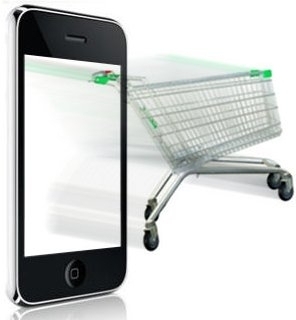How Smart Design Can Boost Mobile eCommerce Sales

The right combination of smarts and luck is the path that most often leads to successful businesses. The luck part is not easy to control, but thankfully, the smart part is!
Smart design is the cornerstone of any business’s online effort. This includes not only providing quick and easy access to what your customers want, but making design decisions based on what really works. That’s the smart part.
Just as design is an important component of a desktop website, it is equally important in considering a mobile website. HEROweb’s mobile design principles work to help create a smart site that customers can easily navigate to find what they want, and follow through with a purchase. We've outlined some important design considerations that will make your mobile website the best it can be.
Design Principles of Smart Mobile Websites
Less Is More: With a roughly four inch screen size on the average smart phone, removing clutter is of utmost importance. That doesn’t mean, however, that your customers don’t care if the information is there or not. On the contrary - mobile customers demand detailed product information, but they want it in collapsible menus that can be opened up and hidden. Instead of numerous links to FAQ pages, product descriptions, shipping information, About pages, etc., consider minimizing with a button called “Learn.”
High Quality Images: Research has shown that many mobile users browse online while shopping for products, to compare prices, colors, and other features. They use this information to help them decide where to make their final purchase. High quality images that show detail are important when you are looking on a mobile device that may be your only way to “see” the product that you are considering buying. The way the images are presented within the mobile design is very important as well. On a desktop site, it may be sufficient and even desirable to have a “hover” feature on an image. Many sites have this feature, which allows a user to mouse and hover over an image to pop up a larger image. Hover-over thumbnails don’t work on a phone. If the user happens to click on an image, chances are a blurry image will pop up that will be too large for them to view on the phone. Even if they scroll up and down and left and right (which they will not want to do!), it won’t allow them to see the whole image.
Emphasize Important Navigation Elements: In the scaled-down visual environment of a smartphone, you want to emphasize the most important navigation elements. The challenge is that you have only a few inches of real estate in which to display your important information. This may mean being smart about your industry and what kinds of information your mobile customers are searching for. For instance, if you’re a restaurant, salon, or doctor’s office, put your phone number and address information front and center. Use your analytics program, in conjunction with your knowledge about any advertising or promotional campaigns you may be engaged in, and figure out which pages your customers look at the most, and make those the most easily accessible on your mobile site. We're not saying that FAQs or About pages aren’t important. But, on a mobile site they should be presented at the bottom, below the other crucial navigation elements.
Provide Large Links and Buttons: On a full-size website, mousing over a tiny link is no problem. But on a mobile screen for anyone with fingers larger than a four year old, it’s problematic. Mobile users tap with their fingers, as opposed to clicking with a mouse. A smart mobile site should provide large, tappable buttons that can be easily pressed with a thumb or forefinger, without accidentally tapping a nearby button.
Provide a Search Bar: A search bar is important on your regular site, and it’s important on your mobile site, if not more so. It allows users to directly access what they want when their time and phone battery is in short supply. The challenge is to make sure your search is robust enough that it always provides relevant results.
Easy Payment Process: Work to reduce the number of screens that customers have to pass through before completing a purchase on a mobile device. Consider implementing a “one-click” payment process for customers who are registered.
Responsive Design: There are numerous models of smart phones and tablets these days. A principle called “responsive design” makes your mobile website work no matter what device is being used to access the site. A responsive website automatically changes to fit the device you’re reading on. Responsive design provides a layout and content that adapts based on the size of the screen the user has. Most websites work best when presented in a single-column format that automatically adjusts to the width of the screen.
Calls-to-Action: With all of the above information in mind, it should be clear that removing obstacles is of utmost importance in a smart mobile design. Working hand-in-hand with this idea is that your calls-to-action should be as effective as possible. Buttons should be clearly labeled with information that performs an action, for example: Check Out, View Cart, Buy Now, Subscribe, and Learn.
HEROweb is committed to providing robust mobile websites that meet your needs and the needs of your customers. There’s no obligation to talk with us. We are ready and armed with information that can help you assess your need for a mobile site, as well as determine the level of customization that your business needs from mobile. Call or email us today to find out more about HEROweb’s commitment to mobile through our MightyMerchant Mobile Platform.

